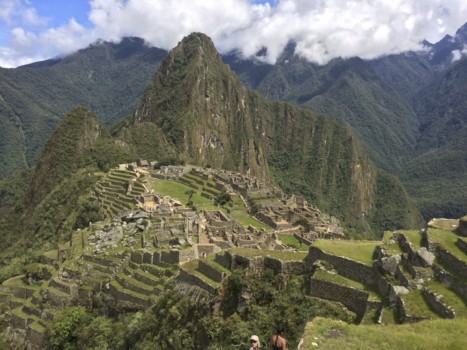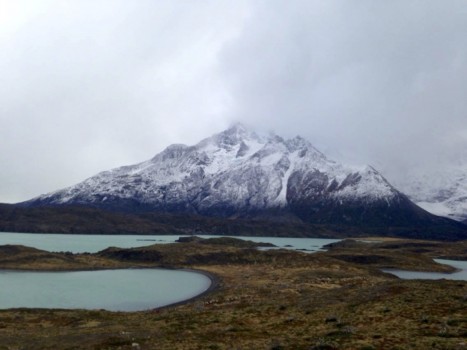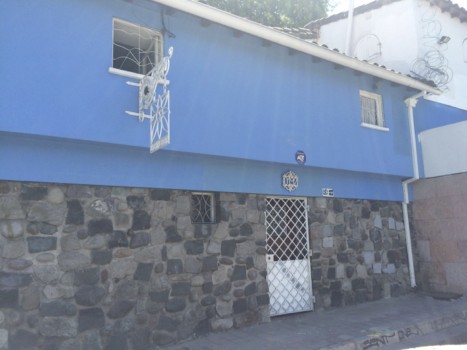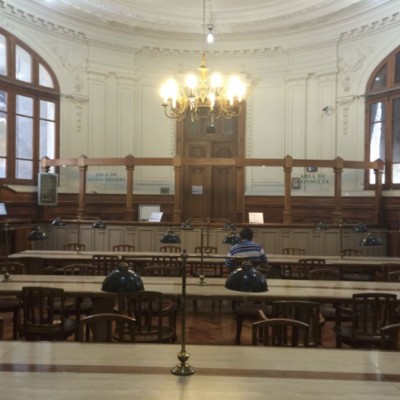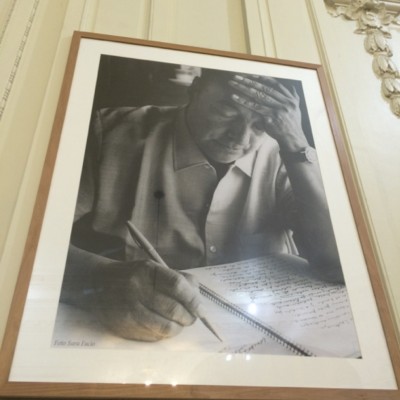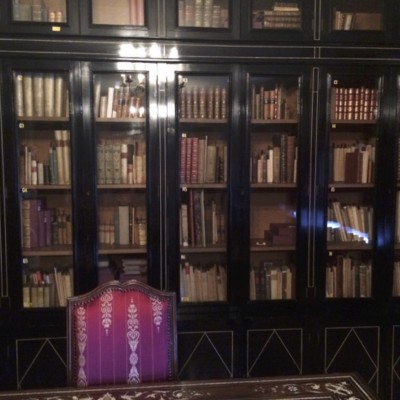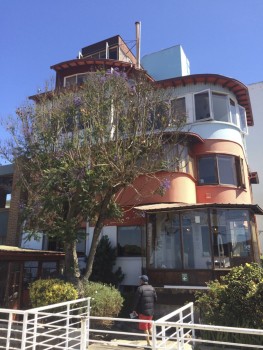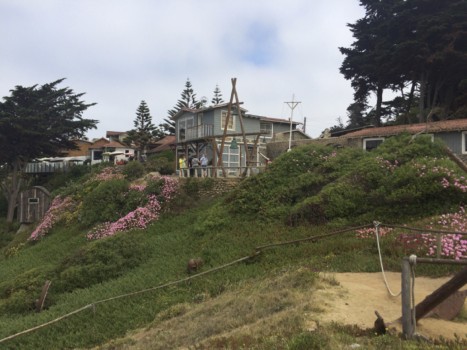During the winter of 2015, Kenzie Hume ’14 traced the life and history of Chilean poet Pablo Neruda across South America. Intrigued by his surrealist aesthetics, and fascinated by his commitment to Chile’s indigenous people, Kenzie used her AMS Grant to visit sites that exerted a formative influence on Neruda’s work: from his personal library in Santiago, to the mountain-top ruins of Machu Picchu. In what follows, Kenzie reflects on her travels and the AMS Grant experience.
Pablo Neruda has intrigued me ever since I took a seminar on Latin American avante garde poetry with my advisor, Chrystian Zegarra. In this seminar, I researched how Neruda used surrealism as a reaction against excessive rational thought, bourgeois values, and the absence of aesthetic preoccupation. My study focused on a very specific stage of his long, illustrious career, because I wanted to understand how Chile’s beloved literary icon transitioned from poet to political militant. I later fell in love with Latin America while studying abroad in Buenos Aires, Argentina during my junior year at Colgate. I visited the Patagonoia region in southern Chile on a spring break trip and was awed by the natural beauty of Torres del Paine. I hoped to return one day to get to know the rest of the country.
My interest in the poetry and life of Pablo Neruda, and my desire to see Chile, inspired my AMS Grant project. I decided to focus on Neruda’s masterwork Canto General, in which he reinterprets the Latin American identity from the perspective of its indigenous elements. My initial goal was to understand how Pablo Neruda formed his own conception of what it means to be Chilean and how his idea of “chilenidad,” or “chilean-ness,” influenced his representation of the indigenous people. The poem “Alturas de Machu Picchu” (“The Heights of Machu Picchu”) is particularly meaningful in this regard. It praises Peru for recognizing the indigenous elements in its culture but denounces the historical exploitation of these people in the construction of the ruins. My project involved investigating Neruda’s background and connecting his personal Chilean identity to his poetry in order to understand what compelled him to write from a viewpoint that affirmed indigenous culture.
To do this, I decided to visit his three houses to learn more about his background and inspiration. The first house I visited was La Chascona in Santiago, Chile. It was really whimsical and disjointed, almost like a treehouse, with many different parts connecting outdoors. Neruda designed it for himself and his (then) lover Matilde. The façade is not ostentatious, and the house focuses on intimate spaces. He even built secret passageways from which he would suddenly emerge to surprise his guests. Hanging inside was a painting I thought represented the themes I was studying. It depicted a fight between the indigenous people and Europeans: Sitting on a throne of clouds, a European queen watches from afar while other Europeans storm the ocean. There are many gruesome and violent elements. For example, there is an arrow in a European baby’s head. At the bottom of the painting, there is a label saying “America.” It was really interesting for him to display art reminiscent of the European-indigenous clash.
From there, I visited Neruda’s archives at the Universidad de Chile, which hosts his entire personal library. It seemed as if he read everything, as there were books about astronomy, medicine, philosophy, and much more. The archives also had an exquisite collection of seashells he gathered during his travels. Clearly, he was a learned man with an international outlook. My last stop in Santiago was to see the Pablo Neruda room in the library. It was interesting to see how Chile commemorates one of its greatest poets.
After leaving Santiago, I went to Valparaíso to see Neruda’s second home, La Sebastiana. This is where he wrote Canto General, the main focus of my study. I could see how he found inspiration, because the house has the most fantastic view of Valparaíso and the entire Chilean coast. The architecture also expressed Neruda’s artistic sensibility.
Finally, I visited Neruda’s coastal house in Isla Negra, which is also the site of his gravestone. The house is full of collectibles reminiscent of his cosmopolitan worldview and extensive travels. One of the most extravagant things in the house was an enormous brass telescope from the French government. He called his favorite room “Cosecha,” which means shelter in Mapuche language, in homage to his childhood in Telemark where there are a large number of Mapuche people.
Having seen where Neruda lived and wrote, I wanted to share the experiences that transformed how he viewed the world and that inspired “Alturas de Machu Picchu.” After returning to South America from abroad, Neruda toured Peru and visited the ruins of Machu Picchu. He was awed by its beauty and was compelled to write “Alturas de Machu Picchu,” a twelve-part poem that celebrates its creation and majesty while condemning the slavery it represented. To some, it is one of the most political poems of all time, while others consider it a testimony to Neruda’s mystic exploration of mankind. The poem lauds Peru for its celebration of its indigenous identity. It was easy to see why his trip to Machu Picchu had such an impact. The ruins are massive, intricate, and surrounded by the most beautiful scenery imaginable. Walking around the site, I felt as though I were on hallowed ground—a testament to the indigenous culture in Peru.
Pablo Neruda is one of the most influential and storied poets in any language. It was a privilege to travel to his homeland to better understand his poetry and interpret it from a different perspective. Through my research and travels, I came to see how his poetry manifests his personal cause: fighting for the identity and cohesion of Latin America. In Canto General, it was clear that Neruda connects his personal identity and voice to his poetry through self-exploration and sharing his experiences.
I am incredibly grateful to Colgate and the AMS program for allowing me to undertake this project. I want to thank my former high school Spanish teacher, Dr. Gloria Garza, who was instrumental in directing my research and gave me the encouragement to pursue my idea to study Neruda. At Colgate, Professor Chrystian Zegarra provided further guidance, advising me to focus on Canto General, and Professor Danny Barreto helped me with my grant proposal. Peter Tschirhart was instrumental in guiding me through the proposal process and aiding in the planning and logistics of the trip. Dean Gary Ross consistently uplifted me with his optimism and confidence every time I visited him.
As a double-major in Spanish and Mathematical Economics, I never anticipated that my AMS research would coincide with my Economics studies, given the topic I had chosen. However, my work ultimately served as the inspiration for my Mathematical Economics Honors Thesis. With the guidance of Jay Mandle and Michael O’Hara, I studied the economic integration of the Mapuche population in Chile after the country experienced immense growth in the late nineties. The surprising blend of my two diverse majors at Colgate my final year speaks to the beauty of a multidisciplinary liberal arts education. It facilitates creativity and passion for learning, which is the core of Colgate’s academic culture and the AMS program.


